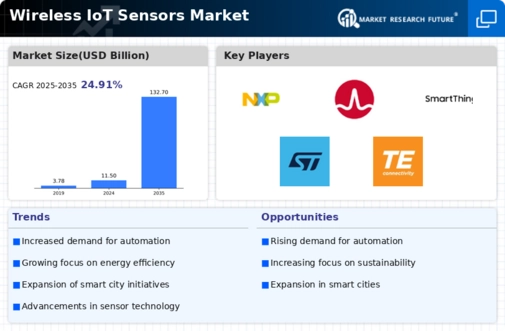Market Analysis
In-depth Analysis of Wireless IoT Sensors Market Industry Landscape
Surging Internet Accessibility
On a global scale, the Internet stands as one of the most transformative and rapidly expanding technologies, influencing consumers worldwide. Our World in Data reports a significant evolution, with more than 3.4 billion Internet users in 2016 compared to a mere 413 million users in 2000. This staggering figure implies an average of 583,000 new users coming online daily. Notably, the surge in Internet users is particularly pronounced in developing nations like China, India, Russia, Mexico, and Indonesia, indicating a substantial increase in global Internet adoption.
Wireless Internet of Things (IoT) sensors play a pivotal role in various applications across consumer, commercial, and industrial domains. These sensors are integral components of IoT devices, enabling functions such as monitoring and control, and contributing significantly to data traffic. The escalating number of Internet users on a global scale correlates with an increased utilization of wireless IoT devices for online monitoring and control purposes.
Examining the highest Internet-using countries as of 2016 reveals the considerable impact of Internet penetration. This surge in Internet users paves the way for heightened reliance on wireless IoT devices, especially in regions experiencing rapid digital transformation.
According to the aforementioned source, Internet penetration is poised for continued growth, further intensifying the reliance on wireless IoT devices. Consequently, the anticipated impact of this escalating Internet penetration on the global wireless IoT sensors market is expected to undergo a shift from a moderate to a high scale throughout the forecast period.
In essence, the increasing accessibility of the Internet is a catalyst for transformative change, with wireless IoT sensors emerging as indispensable components in the evolving landscape of connected devices. As Internet penetration continues to rise, the dependence on wireless IoT devices for real-time monitoring and control is set to become even more pronounced, reshaping the dynamics of various sectors. The implications extend beyond mere connectivity, delving into the realms of data management, analytics, and the seamless integration of IoT technologies into everyday life and industries.















Leave a Comment